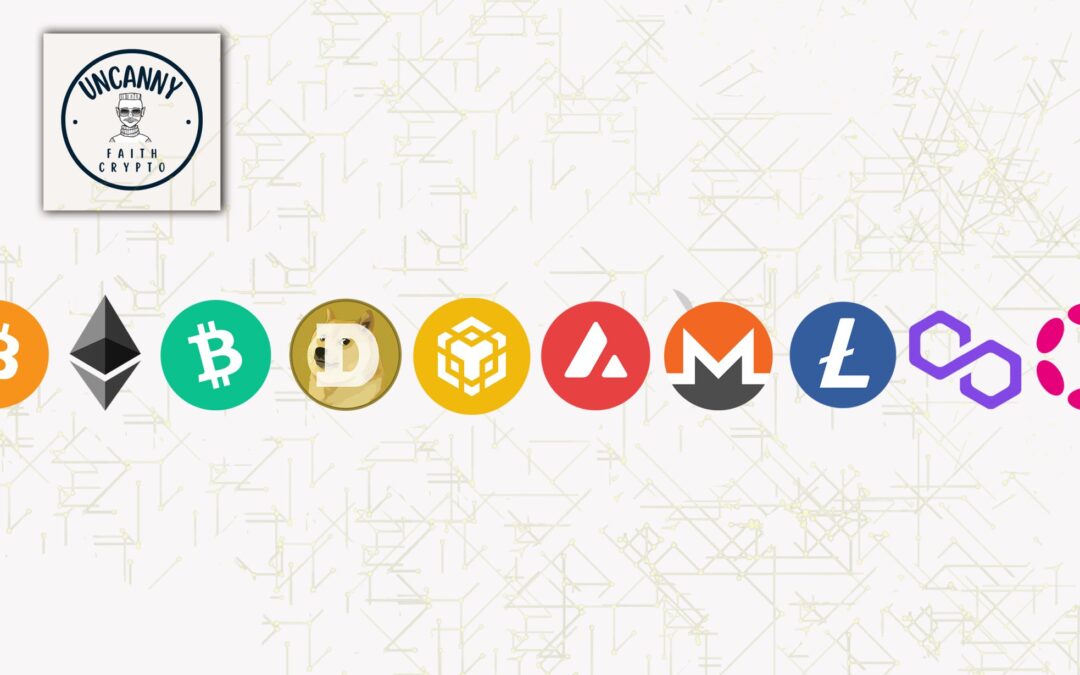Cryptocurrencies have experienced a massive transformation in recent years, evolving from speculative digital assets to instruments that serve real-world applications. At the forefront of this evolution lies the Energy Web Chain (EWC), a blockchain ecosystem purpose-built to drive the decarbonisation of energy systems worldwide. By blending blockchain technology with renewable energy initiatives, the Energy Web Chain offers a unique opportunity to revolutionise both the crypto landscape and the energy sector. But what does the future hold for Energy Web Chain in 2025? Let’s dive into the emerging trends, innovative solutions, and predictions shaping the future of this sustainable blockchain.
What is the Energy Web Chain? A Quick Refresher
Before we project forward, it’s essential to highlight what the Energy Web Chain encompasses. EWC is a blockchain platform explicitly designed to support applications that aim to decarbonise and modernise the energy sector—a vital step towards climate goals like net zero emissions by 2050.
Utilising an open-source proof-of-authority (PoA) mechanism, EWC prioritises scalability, security, and energy efficiency. Unlike traditional energy-inefficient blockchains, EWC focuses on enabling decentralised and sustainable solutions for energy traceability, green certificates, and energy trading—spearheading a new era in which blockchain aligns with sustainability.
As we move into 2025, Energy Web Chain’s role is expected to grow dramatically within the realms of both crypto technology and renewable energy solutions.
Why is Energy Web Chain Important for a Sustainable Future?
One of the most significant challenges facing humanity today is combatting climate change while catering to the ever-growing energy demand. Blockchain technology, despite its potential, has faced criticism for its high energy consumption, particularly with energy-intensive systems like Bitcoin that rely on proof-of-work. Yet, Energy Web Chain flips the narrative. The importance of EWC lies in its ability to:
- Promote Green Innovations: EWC enables renewable energy tracking, empowering consumers and businesses to demand and use clean energy.
- Decentralise Energy Markets: By facilitating peer-to-peer (P2P) energy trading on a global scale, EWC fosters access to sustainable energy.
- Drive Transparency & Trust: Blockchain records are immutable, creating accountability for organisations on their journey to attaining environmental sustainability.
As governments, investors, and corporations align their strategies with sustainability goals, solutions like Energy Web Chain are more critical than ever.
Trends Shaping the Energy Web Chain in 2025
Looking forward, several trends are poised to drive the development and adoption of the Energy Web Chain by 2025.
1. Green Tokenomics and Sustainable Cryptocurrencies
Sustainability will no longer be optional in the crypto sector. By 2025, we expect compliance with environmental regulations to become a norm, and proof-of-stake (PoS) or similar low-energy consensus mechanisms will dominate.
Energy Web Chain will likely be ahead of this trend, with innovations like green cryptocurrencies and tokenised renewable energy certificates. Such developments allow businesses and consumers to trade fractional ownership of renewable energy assets seamlessly—rendering sustainable practices not only accessible but rewarding through token incentives.
Additionally, decarbonised blockchains may create new forms of digital assets designed explicitly for sustainability markets powered by EWC.
2. Integration with Smart Grids and IoT
The rise of Internet-of-Things (IoT) devices and smart grids is expected to revolutionise the way we manage and monitor energy consumption. In 2025, EWC will likely become the backbone for integrating blockchain into IoT-enabled smart grids.
Smart grids promise increased efficiency through demand-response capabilities, allowing energy providers to adjust their output based on real-time consumption data. By integrating blockchain, EWC could ensure the secure recording of energy transactions, grid-stabilisation measures, and demand signals from millions of IoT devices.
With IoT technologies expanding at an unprecedented rate, EWC’s partnership with IoT-based ecosystems will facilitate seamless energy trading and accountability among users, ensuring transparency in electricity generation and consumption.
3. Regulatory Support for Blockchain in Renewable Energy
Recent regulatory efforts in cryptocurrency governance, EU’s MiCA (Markets in Crypto-Assets) regulation, and countries increasingly investing in renewable energy suggest that EWC will witness more regulatory clarity and adoption by utilities in 2025. Governments will likely require companies and renewable energy plants to integrate with blockchain-based verification systems to track and limit environmental damage.
Beyond this, EWC compliance frameworks may evolve to help organisations meet sustainability goals like ESG (Environmental, Social, Governance) reporting, demonstrating how blockchain tracking aids businesses in securing their “green” credentials while avoiding greenwashing accusations.
4. Cross-Industry Collaborations
Multi-sector integration is likely to expand Energy Web Chain’s footprint in 2025. Partnerships between energy providers, automotive companies, electric vehicle (EV) manufacturers, and blockchain-focused consortia are expected to drive adoption.
For instance, the increasing popularity of electric vehicles (EVs) presents enormous potential for blockchain-powered energy trading platforms such as those hosted on the Energy Web Chain. EVs can serve as mobile producers or consumers of energy, allowing individuals to trade or utilise surplus electricity efficiently via blockchain-powered peer-to-peer solutions.
Industry partnerships with sectors beyond energy—such as tech, transport, and finance—could result in innovative payment models, e.g. pay-as-you-go charging stations using decentralised digital wallets powered by EWC tokens.
Predictions for Energy Web Chain in 2025
With these trends in mind, here’s what the future could look like for the Energy Web Chain in 2025:
Widespread Adoption and Mainstream Solutions
Energy Web Chain may become the industry standard for renewable energy tracking. Utility companies will likely leverage EWC tools to certify the source of electricity and incentivise customers to choose renewable energy over fossil fuels. Wearable devices and home apps could even integrate with EWC to transparently display a household’s decarbonised energy footprint.
A Gigantic Decentralised Energy Market
Powering low-carbon economies can lead to a significant rise in community-led initiatives such as renewable energy cooperatives. The underpinning decentralised nature of EWC could power these cooperatives, helping local communities democratise access and ownership of small-scale renewable energy systems like solar panels and wind turbines.
Digital Identity for Energy Assets
By 2025, it’s highly likely that Energy Web will expand its decentralised digital identity for energy assets—allowing energy devices (like solar panels or electric cars) to self-authenticate their participation in decarbonised activities.
Such energy assets could transact autonomously through blockchain while owners earn rewards for optimally distributing green energy within a smarter, decentralised grid.
Tactical Innovations to Expect from Energy Web Chain
The evolving needs of the energy ecosystem mean that active innovation is not just expected but necessary. By 2025, EWC may introduce:
- Dynamic Renewable Energy Pricing Models: Tokenisation will facilitate real-time energy market pricing without intermediaries.
- AI Integration: Harnessing AI algorithms for predictive analytics to improve energy distribution on decentralised grids.
- EWC Ecosystem Expansion: Additional dApps (decentralised applications) tailored for industries like agriculture, manufacturing, and transport.
- Gamification in Sustainable Behaviours: Incentives may include gamified rewards for users adopting renewable practices (e.g., earning tokens for reduced consumption).
Actionable Takeaways: How Can You Prepare for the EWC Revolution?
If you’re a business leader, tech enthusiast, or environmentally conscious citizen, here’s how you can prepare to be part of this sustainable crypto-future:
- Invest in Knowledge: Educate yourself on blockchain, renewable energy systems, and decentralised applications.
- Adopt Green Practices: Look into certifying your energy with blockchain to stand out in a competitive market.
- Explore Tokenisation: Consider how you can leverage tokenised solutions, like renewable energy credits, to meet sustainability goals cost-effectively.
- Advocate for Change: Encourage governments and regulators to adopt blockchain-powered systems like EWC to advance local green initiatives.
FAQ: Clearing Up Common Questions
What Makes Energy Web Chain Unique?
EWC focuses exclusively on transforming the energy sector through sustainability-driven blockchain technology, setting itself apart from general-purpose platforms like Ethereum.
Is EWC Truly Energy Efficient?
Yes, EWC operates on a proof-of-authority consensus, which requires significantly less energy compared to proof-of-work models like Bitcoin.
Can Businesses Use Energy Web Chain in 2025?
Absolutely! EWC is expected to grow in popularity among businesses, offering tools for green energy tracking, emission offset compliance, and seamless P2P energy trading.
The Energy Web Chain in 2025 represents a pivotal step toward merging blockchain innovation with responsible climate action. By catalysing renewable energy adoption and transforming outdated energy models, EWC sets the stage for a fairer, greener, and decentralised future. Let’s embrace this sustainable revolution—because when technology and purpose align, the possibilities are endless.
Ready to power a sustainable future? Start exploring Energy Web Chain today and become a part of the blockchain-led green economy poised to make waves in 2025!

